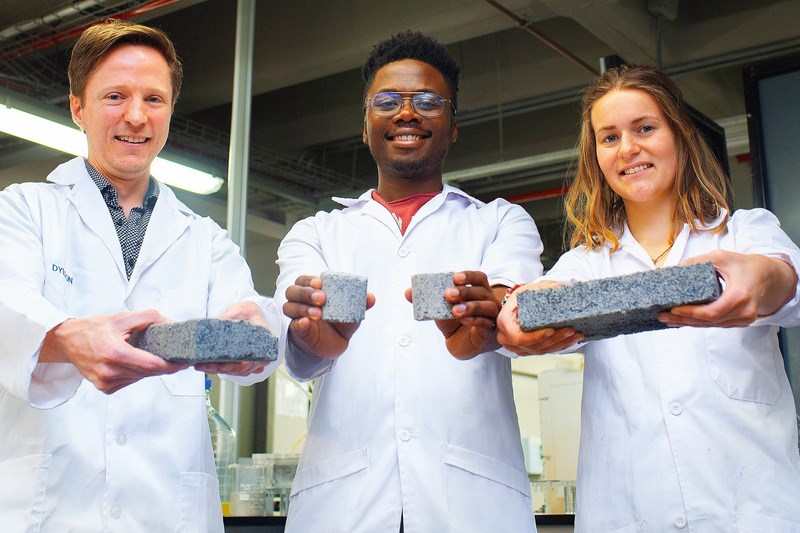New zero-waste material for buildings is made from urine
At the University of Cape Town in South Africa, some researchers turned urine into a zero-waste building material, contributing to a sustainable future.
Urine is made of 90% of water and the remainder contains vital nutrients like phosphorous, nitrogen, and potassium. Researchers placed some portable urinals in men’s rooms around the campus to capture pee. Using the collected urine they demonstrated new ways of turning that human waste into sustainable fertilizers and even into sturdy bio-bricks that can be molded into a shape.
Turning pee into bio-bricks is a three-phase process.
First, urine is collected in special urinals connected to plastic containers filled with calcium hydroxide powder (also known as lime). Over time, this pee-lime pie mixture naturally combines to form calcium phosphate (a common fertilizer). This phase also kills any harmful pathogens and bacteria living in the pee. Once the fertilizer is removed from the urine, a liquid component remains.
In step two, this liquid is mixed into a separate container containing sand and bacteria. These bacteria react with the urine to produce calcium carbonate, which cements the sand into any shape.
The third step is to put the ingredients into a rectangular mold and in two to six days, you’ve got a bio brick. The longer the mixture is left to grow, the sturdier the brick becomes.
Bio-bricks could be used to construct buildings in the future but will also require new developing sustainable methods of collecting and transporting human urine.
Source Focus

